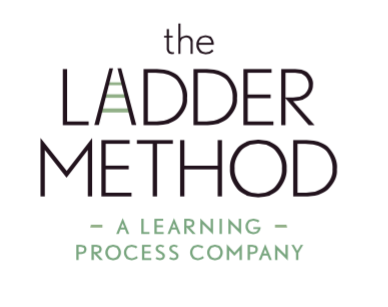Can Brown Noise Help With ADHD Focus And Productivity?
Imagine the sound of thunder rolling or ocean waves pounding in the distance. This is known as brown noise.
Brown noise is a deep ambient sound believed to reduce inattention in adults living with ADHD.
Though not widely studied as a focus tool, it's gaining interest. White noise, a better-known counterpart, is already linked to improved sleep, calm, and mental sharpness.
If you live with ADHD, exploring different background sounds or music might help sharpen focus and get more done. There’s no single solution, so it helps to test what works best for you.
That said, some say brown noise benefits ADHD symptoms, although the science behind this effect remains unclear.
What Makes Brown Noise Unique Among Ambient Sounds?
Brown noise is one of several “colors” of noise. As noted earlier, white noise is the most recognized ambient sound. Other types include pink noise and green noise.
These sounds differ based on the amplitude and frequency range of their waveforms.
Brown noise, similar to white noise, contains every frequency the human ear detects. But it emphasizes lower frequencies, producing a deeper and more rumbling tone.
People often describe brown noise as:
• Heavy rain or distant thunder
• A jet engine droning
• Rushing river water
• Crashing ocean waves
• A strong gust of wind
• The base of a waterfall
Its natural, low-frequency tone makes brown noise sound richer and calmer than pink or white noise. Many listeners find it more relaxing and easier to focus with.
If you feel at ease and mentally alert during a flight or fast car ride, brown noise might offer similar benefits.
How Brown Noise Supports Focus in People With ADHD
People with ADHD often find it hard to concentrate, especially when working on tasks that feel dull or repetitive. That’s because their brains process stimulation differently.
ADHD brains differ in both structure and chemistry from neurotypical brains. One key difference involves dopamine—a chemical messenger tied to motivation and focus. In ADHD, dopamine pathways may be disrupted, contributing to inattention.
Research shows that people with lower dopamine, including those with ADHD, tend to perform better with extra background noise. That’s because a specific level of ambient sound may help activate their brain.
So, what role does brown noise play for those with ADHD?
When dopamine is low, the ADHD brain becomes under-stimulated and focus drops off. Brown noise may boost mental stimulation just enough to sharpen attention and improve task performance.
Another possible way ambient noise supports ADHD is through auditory masking.
This technique works by drowning out distracting background sounds with steady ambient noise, like brown noise.
Because individuals with ADHD are more sensitive to external stimuli, brown noise may help reduce these distractions and support sustained focus.
Some also report that it quiets racing thoughts, helping them concentrate more easily on the task at hand.
What Are the Benefits of Brown Noise?
Brown noise offers several potential benefits, particularly for individuals looking to improve focus and manage symptoms of ADHD. While scientific research is still developing, many users report the following positive effects:
1. Enhanced focus and increased productivity:
The deep, steady sound of brown noise may help stimulate the ADHD brain and block out environmental distractions like background chatter or sudden noises.
2. Lower stress levels:
Brown noise has a soothing, low-frequency tone that many find naturally calming. This can reduce anxiety and help create a more focused mindset.
3. Improved sleep and relaxation:
By masking external noises, brown noise may promote deeper rest and a faster transition into sleep—especially helpful for those who struggle with nighttime disruptions.
That said, most of these reported benefits are based on personal experience. Currently, scientific studies on brown noise are limited.
Existing research on ambient noise and ADHD has primarily focused on white noise, especially in children. In those cases, white noise has been shown to enhance attention and cognitive performance in people with ADHD.
Experts suggest that brown noise may deliver similar benefits, possibly offering a gentler, lower-frequency option for maintaining attention and task engagement.
Because results vary by individual, it's best to experiment with different types of ambient sounds and music to find what improves your focus, relaxation, and productivity the most.
Is Brown Noise Safe to Use?
Brown noise itself isn’t harmful. The main concern comes from playing brown noise—or any ambient sound—at volumes that are too loud.
If you use sound to help with sleep or productivity, protecting your ears is key. The World Health Organization (WHO) notes that volume, length of exposure, and frequency all affect hearing.
Here are safe listening tips for brown noise and similar sounds:
• Keep volume under 80 dB. For context, that’s similar to a doorbell or busy traffic. As a rule, stay at 60% of your device’s max volume.
• Try noise-canceling headphones. They block outside noise, so you won’t need to turn things up too high.
• Use a volume monitoring app. Some devices even alert you if the sound gets too loud.
Another issue could be the noise itself becoming a distraction. Because ADHD show up differently in each person, some may feel overstimulated by brown noise.
In short, brown noise carries little risk. If you’d like to try it to support ADHD focus, streaming platforms are the easiest way to find curated tracks.
How Brown Noise Can Help You Stay on Task With ADHD?
For adults with ADHD, staying focused on a task can feel like swimming upstream. That’s where brown noise might come in as a surprising but effective productivity tool.
Although clinical studies on brown noise are still emerging, many people with ADHD report noticeable improvements in attention, productivity, and even sleep when listening to it. Its deep, consistent tone may help stimulate the brain just enough to maintain engagement—especially during monotonous or mentally demanding work.
Experts believe this effect may stem from how brown noise interacts with the ADHD brain’s dopamine system. Dopamine is a chemical messenger linked to motivation, focus, and reward. Since ADHD is often marked by low dopamine activity, brown noise may help simulate the stimulation that dopamine provides, helping users sustain attention for longer periods.
Beyond its potential neurochemical impact, brown noise can also create a more focus-friendly environment. It masks sudden noises—like a barking dog, a car horn, or coworker chatter—that often derail people with ADHD. At the same time, many users say it helps calm internal distractions, such as racing thoughts or anxiety.
If you decide to try brown noise for concentration, keep your hearing health in mind. Use noise-canceling headphones, avoid high volumes, and limit your exposure time when possible. Listening safely ensures the long-term benefits outweigh any risks.
Who Should Consider Using Brown Noise for ADHD?
Brown noise isn’t a one-size-fits-all solution, but it may offer meaningful benefits to specific groups of people—especially those navigating attention-related challenges. Understanding who’s most likely to benefit from brown noise can help you decide if it's the right tool to add to your productivity toolkit.
Ideal Candidates for Brown Noise
1. Remote workers with ADHD
If you work from home and struggle to block out everyday distractions—like traffic, neighbors, or household noises—brown noise can help create a consistent, focus-friendly soundscape. This is especially useful for ADHD brains that crave stimulation yet need fewer interruptions to stay on task.
2. Students with attention difficulties
Whether studying in a noisy dorm or trying to focus on homework, students with ADHD may find that brown noise minimizes external disruptions and supports longer periods of concentration.
3. Adults with ADHD who experience racing thoughts
Brown noise may help "turn down the volume" on internal distractions. For some, the steady hum of brown noise provides enough auditory stimulation to quiet overactive thinking and promote mental clarity.
4. Neurodiverse individuals sensitive to sound patterns
Brown noise tends to be smoother and deeper than white noise, making it more tolerable for people who are sensitive to high-frequency sounds. For neurodivergent people who are easily overstimulated, brown noise can offer a gentler alternative.
5. Anyone looking to improve sleep or relaxation
If your ADHD symptoms interfere with sleep—especially due to sensitivity to small sounds at night—brown noise may help mask ambient noise and support better rest.
Who May Not Benefit From Brown Noise
While brown noise can be incredibly helpful, it’s not ideal for everyone:
People sensitive to low-frequency sounds:
Some individuals may find brown noise unpleasant or even anxiety-inducing due to its bass-heavy rumble.Those prone to over-arousal or sensory overload:
Brown noise is still a form of stimulation. If you already feel overwhelmed by noise, even a low, steady one could increase stress instead of reducing it.Users who prefer silence to concentrate:
Not all ADHD brains need background sound. Some people may work better in complete silence or respond more positively to nature sounds or instrumental music.
If you’re unsure whether brown noise will help you, try testing it in short sessions using headphones or a sound machine. Track how you feel and how your focus responds. The key is to tailor your environment to your brain’s needs—and that often starts with thoughtful experimentation.
Conclusion
Brown noise may not be a cure-all, but it’s a promising tool for adults with ADHD looking to improve focus, productivity, and daily function—whether at home, school, or in business. Its deep, consistent sound can help reduce both external and internal distractions, offering a calm backdrop for concentrated work. While scientific evidence is still emerging, countless individuals have shared personal success stories using brown noise to manage ADHD symptoms. For professionals or entrepreneurs, especially those managing a busy business environment, creating a distraction-free workspace is key—and brown noise might be the missing piece. Just remember: results vary. Pair brown noise with structured systems like task batching or ADHD coaching to maximize its impact. Start small, listen safely, and observe how your mind responds.
Frequently Asked Questions
1. What is brown noise, and how is it different from white noise?
Brown noise has deeper, lower frequencies, creating a more calming sound compared to the higher-pitched static of white noise.
2. Can brown noise help adults with ADHD stay focused at work?
Yes, many adults with ADHD report improved focus and fewer distractions when using brown noise in business or work settings.
3. Is brown noise better than white noise for ADHD?
It depends on personal preference. Some find brown noise more soothing and less harsh than white noise.
4. Are there any risks to using brown noise?
The main risk is listening at high volumes. Keep sound below 80 dB and use noise-canceling headphones if needed.
5. How long should I listen to brown noise?
Start with 30–60 minute sessions and adjust based on your focus levels and tolerance.
6. Can brown noise help with sleep problems caused by ADHD?
Yes, it may help mask disruptive background sounds and calm racing thoughts, supporting better sleep.





